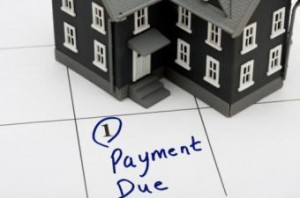 The April 2015 First-Time Buyer Mortgage Risk Index (FBMRI) for Agency loans increased by nearly a full percentage point year-over-year up to 15.28 percent, indicating that those mortgage loans are moving deeper into the high-risk category, according to data released this week by the American Enterprise Institute (AEI)'s International Center on Housing Risk.
The April 2015 First-Time Buyer Mortgage Risk Index (FBMRI) for Agency loans increased by nearly a full percentage point year-over-year up to 15.28 percent, indicating that those mortgage loans are moving deeper into the high-risk category, according to data released this week by the American Enterprise Institute (AEI)'s International Center on Housing Risk.
Risk layering is largely responsible for the increase in risk on mortgage loans taken out by first-time buyers, according to AEI. Seventy percent of first-time mortgage buyers in April 2015 had a combined LTV ratio of 95 percent or more and 97 percent of them had a 30-year term. Without substantial home price appreciation, the low down payment and slow amortization makes it likely that these first-time buyers will have very little equity in their homes for many years.
Also contributing to the higher risk among first-time buyers is that approximately one-fifth of them fit the traditional definition of subprime mortgages (a FICO score below 660) and about one-fourth of them had total debt-to-income ratios higher than 43 percent, which is the limit defined by the Qualified Mortgage rule, according to AEI.
"The first-time buyer MRI hit a series high of 15.28 percent in April, moving deeper into the high-risk loan category," said Edward Pinto, co-director of the American Enterprise Institute’s (AEI’s) International Center on Housing Risk. "This growing leverage puts the housing market at risk given interest rates are at historically low levels and American households are facing increasingly sharp swings in income and expenses."
The Agency index for first-time buyers in April (57.9 percent) was 6 and a half percentage points higher than the index for repeat buyers, according to AEI. Repeat mortgage buyers are often less risky because of a smaller share of repeat buyers have a FICO score below 660 and a much smaller share have a combined LTV ratio of above 95 percent.
The First-Time Buyer Mortgage Share Index (FBMSI) increased by 1.1 percentage points year-over-year in April, up to 57.9 percent, which indicated that first-time buyers accounted for 57.9 percent of primary owner-occupied home purchase mortgages with a government guarantee. The combined share of first-time buyers for both government-guaranteed and private sector mortgages also rose in April by full percentage point up to 52.2 percent, according to AEI. Both the combined index and the first-time buyer share index showed little change in the last two years outside of seasonal trends, which was contrary to the findings of the annual National Association of Realtors (NAR) survey issued in November that showed a sharp decline in first-time home buyer share during the same period.
"A recent Urban Institute study of first-time buyers confirms the results we have been reporting for some time," said Stephen Oliner, co-director of AEI’s International Center on Housing Risk. "These results are contrary to the drop in the first-time buyer share shown by the NAR measure."
The overall number of primary owner-occupied purchase mortgages that sent to first-time buyers (the Agency FTB loan count) increased year-over-year for the six-month period from November 2014 to April 2015 by 8 and a half percent up to 577,000. The number was reported at 532,000 for the same six-month period a year earlier.
To see the full April 2015 report from the AEI International Center on Housing Risk, click here.

 theMReport.com Your trusted source for mortgage banking news
theMReport.com Your trusted source for mortgage banking news








